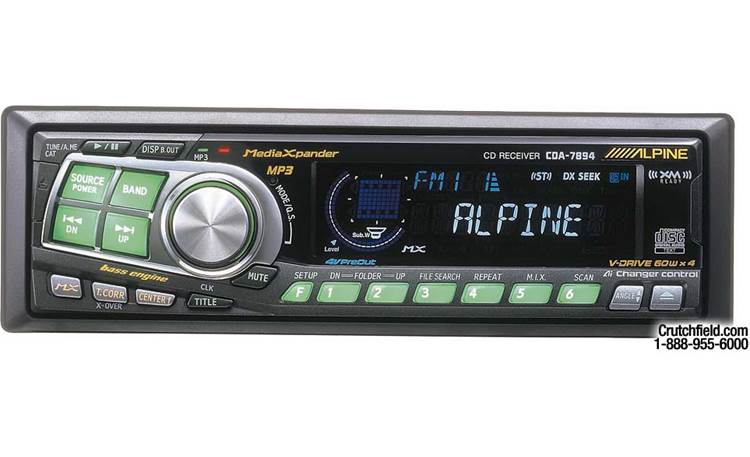The frequency response for the 6.5 goes down to 35hz, the 5.25 to 60hz and the 4 only to 80hz.
(and the polk 5.25 seems particularly weak ... the response on Alpine's low end series 6.5 was 35hz, 4 was 80hz, but the 5.25 was at 45hz)
But bass at 45 (or even 60 hz) is some bass ... which is MUCH better than 80 hz
Is it going to thump like a sub ... no ...
But the 5.25 will sound MUCH less thin than a 4.
All high power head units are about the same, don't believe any of them when they claim to be much higher power than other ones.
The laws of physics/electronics cause a very real limit to how much power a head unit can deliver into 4 ohm speakers using a 12 volt (nominal) source.
Its on the order of about 20 watts/channel or so. Any headunits that claim higher will have to cheat to do it ... by using a higher "battery" voltage, low impedance speakers, multiple speakers/channel etc.
Years ago there was no standardization on how the specs were measured, and many of the car stereo specs were wildly inflated by pretty much all the manufacturers. Eventually the industry developed a realistic standardised test refered to as the "CEA-2006 Power Rating".
Look at Alpine's webpage for the current headunits http://www.alpine-usa.com/US-en/prod...category=AV_HU You will see that every single headunit lists a power spec between 4 x 45 and 4 x 60 watts.
And then in the fine print you will see a section that says something like "CEA-2006 Power Rating (4Ohm@14.4 V =1% THD+N), S/N 80dBA (Ref: 1W into 4Ohm): 18W x 4". The CEA-2006 rating of every single Alpine headunit from the cheapest to the $1,400 one is 18 watts/ch or less.
Go to Sony, JVC, any of them and you'll see the same thing.
On some of the less reputable manufacturers you may not see it, but read their specs carefully.
It's not that their headunits are more powerful, its just that they inflate the specs somehow.
Absolutely positively ALL the high power headunits are limited to this. Period. No exceptions.
V=IR enforces it, and theres no getting around it.
The only way to get more is to use a DC/DC converter, and I've never heard of one in a head unit.
If you believe otherwise, you have swallowed some advertisers bullcr@p hook line and sinker.
Dedicated amplifiers get around this by boosting the voltage using a DC/DC converter.
The DC/DC converter takes the 12V DC, chops it up into high frequency A/C, runs the AC into a transformer which boosts it to a higher voltage (typically 20 to 75 volts or even more) and rectifies it back into DC (but at much more than 12-14 volts)
They then internaly use this higher voltage to run the actual amplifier.
But that is too big and heavy (and expensive) to have inside the headunit, and to the best of my knowledge there are no headunits that have a DC/DC converter built in.
So ALL "high powered" head units are within a dB or two of each other.
Some particularly crappy manufacturers units may be somewhat lower, but none will be higher. EVER
If you want more than 20 watts per channel (in reality, as opposed to what the advertisers try to pretend if you arent' looking carefully) you absolutely positively have to get a seperate amp.
.png)



Comment